Research Experiences for Undergraduates 2018-Participants
From Santa Fe Institute Events Wiki
| Research Experiences for Undergraduates 2018 |
Benjamin Anker

Central New Mexico
Bio: Rising Sophomore in Computer Science, particularly interested in cellular automata. If I'm not studying I'm probably rock climbing.
Mentors: Mirta Galesic and Joshua Garland
Talk Title: Inferring Prejudice based upon Part of Speech Differences
Abstract:
In this paper we examine the ways in which identical words can have different semantic meanings and contexts, both across time and across political spectra. We propose that using the same words as different parts of speech consistently may suggest an individual’s or community’s political leanings and that examining the semantic contexts of these words may illuminate how beliefs of individuals and communities evolve. E.g. “the gays” (gay used as a noun) might be more prejudicial than “gay people” (gay used as an adjective).
The approach taken is similar to the strategies employed by Kulkarni et al (2014) in that we examine frequency, syntax, and semantics. Frequency analysis involves the ratio of a given word count to corpus size, while syntactic analysis examines the part of speech a word is used as - as mentioned above. Finally, semantic analysis involves training instances of word2vec on corpora divided by time/community before comparing the resulting vectors to find words that carry different meanings in different times/communities.
Data used are news articles and comments published on the websites of Breitbart, The Atlantic, Mother Jones, and The Hill, in the period from 2015 to 2017. We believe that this approach may enable the early detection of individuals or communities drifting towards more radical views, especially those under the influence of demagogues with distinctive patterns of rhetoric.
Maddie Barrie
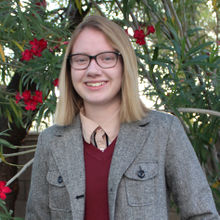
Michigan Technological University
Bio: I am an Environmental Engineering major in Houghton, Michigan, but I originally come from Las Vegas, Nevada. In Houghton I participate in all things winter because this year alone we’ve had 261 inches of snow (I have forgotten what the sun looks like). As a member of Engineers Without Borders, my team is working on a water distribution system for a town in Panama. In my research I’m interested in climate change mitigation strategies and their application to the most victimized and underdeveloped areas.
SFI MENTOR: Elizabeth Hobson (primary) and Scott E. Page (secondary)
TITLE: Diversity Bonuses in Humanitarian Engineering
ABSTRACT:
Diversity bonuses occur when a group with diverse cognitive skills works together inclusively on cognitive non-routine tasks. The ideal cognitive repertoire and type of inclusion differ depending on the task that needs to be completed. The goal of this project is to understand to what extent diversity bonuses occur in philanthropic engineering, specifically looking at projects done by Engineers Without Borders (EWB). Furthermore, the project will examine variances in cognitive repertoires and types of inclusion present in EWB projects using surveys sent out to the student international project teams of the organization. By examining the structure and composition of student chapters and comparing them with the successes and failings of their perspective projects, insights into the ideal configuration can be deduced.
Megan Bromley
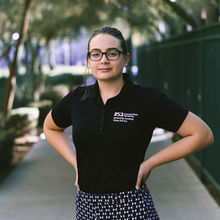
Arizona State University
Bio: Megan Bromley is an incoming senior at Arizona State University, where she studies Astrobiology and Creative Writing. She is also active in the Sun Devil Marching Band as a piccolo player and is a poetry editor for Superstition Review-- a semiannual online literary magazine that attracts authors from around the world.
Naika Dorilas
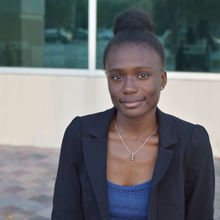
Florida Atlantic University
Bio: Hello, my name is Naika Dorilas. I am going into my senior year at Florida Atlantic University, and I am a mathematics major with a minor in computer science. I am very excited to learn and grow as a researcher in the SFI community because this is the field I want to dedicate my career to. Outside of academics, I volunteer at a horse ranch and with special needs children.
SFI MENTOR: Jacopo Grilli and Andy Rominger
ABSTRACT:
Talk Title: Inferring Characteristics of Interaction Matrices in an Ecological Context
In ecology, an interaction matrix describes how species in an ecosystem interact with one another and affect each others growth in a given model of population growth. In an attempt to find a method for inferring species interactions, many ecologists have tried to go from time series data on the populations of species to inferring the entire interaction matrix. In this paper, the objective is to infer parameters of the interaction matrix, given a set of data, so instead of inferring the entire matrix, we just want 3 key statistical properties about how the entries are drawn, the mean, variance and average diagonal elements d. So based on a specified ecosystem we are trying to find a method of inferring the statistical properties of the interaction matrix between different species based on a simple model of population fluctuation. We will use maximum likelihood, to predict the probability of observing our data, x given our parameters for the mean, variance and average diagonal elements. So what we expect from this maximization are the parameters that make the data, or fluctuations in population sizes of the species the most likely. The implications of this are that assuming this method is successful, any randomly generated matrix with the given statistical properties found could be used to describe how species in the data set used interact.
Nicolas Gort Freitas
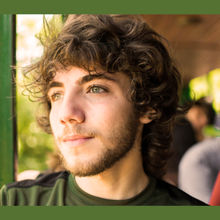
Minerva Schools at KGI
Bio: Nico is a rising senior at Minerva Schools. He studies natural and computational sciences, concentrating in biology and statistics respectively. Nico’s interests range from systems and synthetic biology to linguistics and information theory. He is passionate about discovering new ways to model interactions in biological systems and their evolution. In his free time Nico enjoys hiking and dancing tango, and is keen on learning languages and playing folk versions of rock songs.
SFI MENTORS: Chris Kempes, Artemy Kolchinsky.
Abstract
Energetic and informational trade-offs in biochemical networks
Cellular environments are complex and dynamic. The temporal and spatial concentration profiles of external molecules encode information that cells can harness through networks of interacting molecules, which allow them to learn about their environment. I will study the relationship between the architecture of biochemical networks and their efficiency in terms of energetic cost, transmission speed and accuracy. I will extend analytic models and build spatial simulations based on statistical mechanics, thermodynamics, information theory and network science. This work intends to unveil a framework to design more efficient synthetic biological circuits for different types of signaling tasks and cellular environments.
URL: Personal website.
Seung Yeon Han
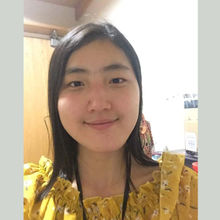
St. John's College
Bio: Hello, I'm Seung Yeon Han from St. John's College. You can call me Yona. I'm studying Liberal Arts in the college. Looking forward to meeting y'all! :)
SFI MENTOR: Mike Price (co-mentor), Andy Rominger (co-mentor)
ASPIRATIONAL ABSTRACT:
Provisional Title: Economic Inequality and Professional Diversity
At this point, the research aims to answer the question "Is there any correlation between economic inequality and professional diversity?"
Edward Huang
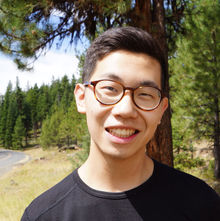
University of California, Berkeley
Bio: Edward is a third-year applied mathematics student at UC Berkeley with a concentration in computer science. Previously, he worked on undergraduate research in evolutionary ecology and radiobiology. His current research interests include neural networks, signal processing, and modeling complex systems. Apart from his studies, Edward serves as an ambassador for the outdoor brand Klattermusen and leads instructional rock climbing and mountaineering trips with other students.
URL: www.eghuang.com
SFI MENTOR: David Wolpert
TALK TITLE: Connections between Turing machines and a formalization of knowledge
ABSTRACT: There has been much interest surrounding what properties about the universe can be derived from applying a mathematical formalization of inference and knowledge. Previous work by Wolpert used the theory of "inference devices" (IDs) to demonstrate bounds on knowledge in any physical universe that allows agents to hold information concerning that universe. We extend previous work on the capacity and limitations of IDs to infer physical variables. Our results impose conditions on the inference of singular functions and sets of functions. We pursue analogues between IDs and their relation to Turing machine theory and algorithmic information theory. In particular, we show that any Turing machine can be strongly inferred and build upon that to demonstrate incompressibility of strong inference complexity. This incompressibility result has led to several analogues between Kolmogorov complexity and inference complexity that suggest further similarities between algorithmic information theory and the theory of inference devices.
Alyssa Johnson

New Mexico Highlands University
Bio: I'm originally from Santa Fe, NM, and now study Mathematics and Sociology at NMHU in Las Vegas, NM. In particular, I'm interested in the sociology of our built environment, and issues such as climate change resilience, environmental justice, and housing policy. I've also done non-profit work in sustainability and climate change education. Currently, I'm living in and restoring a historic home, I sing in NMHU's Madrigal Choir, and I enjoy reading works of fiction and of creative nonfiction.
SFI MENTOR: Chris Kempes (primary), Geoffrey West (secondary)
ABSTRACT:
Provisional Title: Scaling in Housing Availability and Affordability
When discussing housing affordability and access, we often refer to a community’s average income or median home price, without taking into account the actual distribution, complete with skew and outliers, of these measures. This project aims to create a new measure of availability of affordable housing by quantitatively comparing the shapes of the frequency distributions of income and housing cost. I will then explore whether this measure of availability exhibits a scaling relationship with respect to city size, the way that so many other urban attributes do.
Terran Mott
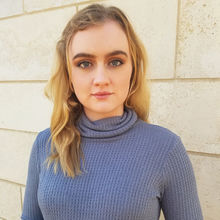
Grinnell College
Bio: My name is Terran Mott, I am mathematics and economics major at Grinnell College from Golden, Colorado. In my free time, I run cross country for Grinnell and enjoy spending time in the mountains.
SFI MENTOR: David Feldman
ABSTRACT:
Title: Building Intuition in Higher Dimensions: A Combinatorial Approach to Higher Dimensional Fractal Geometry
Visual intuition is limited to three dimensions. Despite this blindfold, plenty of geometry lives comfortably in higher dimensions. In this paper, we develop an intuitive framework that explores the structure of N-dimensional cubes without visualization. We create a combinatorial system that categorizes the innards of hypercubes to understand how their material is assembled. By translating higher dimensional geometric challenges into combinatorial ones, we can analyze the higher dimensional analogs of common cube-originated fractals. We can also explore universal properties of hypercubes that hold in any dimension.
Talk: https://tinyurl.com/terran-mott-sfi-talk
"Dirty" Mike Neuder
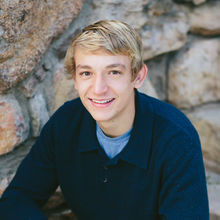
University of Colorado Boulder
Bio: I am a Computer Science and Math major from University of Colorado at Boulder. I spend most of my time working, climbing, playing chess and reading.
Personal url: https://github.com/michaelneuder
SFI MENTOR: Joshua Garland (primary), Andrew Berdahl (secondary)
ABSTRACT:
Provisional Title: Animal Tracking and Collective Behavior on UAV Video Data
Collective animal behavior is one of the canonical examples of Complex Systems, and with the immense development of machine learning, computer vision, and big data, we now have a new way to explore this phenomenon.
This project has two sequential parts. First, using video footage taken from drones flying above herds of caribou in the Yamal Peninsula in Russia, we seek to extract the trajectory data of each animal in the herd (which in itself is quite a difficult task). Once we have the trajectory data, there are several questions we seek to answer about the behavior of the group. The most fundamental aspect is the local interaction rules of the individuals in the group (e.g. individuals tend to repel each other at a close distance while attracting each other at a long distance to keep the herd together ). The followup and long-term goal of this project is to learn how animal herds behave in a resource gradient. We have the technology and capability to get extremely accurate data about the plant life of the land, which would allow us to create a resource map detailing where the plant life is concentrated. Overlaying the herd trajectory on this resource map would allow us to see the collection of animals interact with the gradient of the map and give us great insight into the capabilities of herds.
Oluwasunmisola Ojewumi
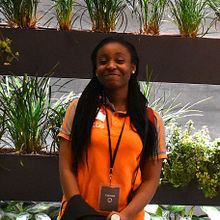
Minerva Schools at KGI
Bio: Hi! I'm Oluwasunmisola, and I'm from Nigeria. I am a Freshman at Minerva Schools at KGI, and I intend to do a double major in Natural Sciences and Social Sciences. I also enjoy writing, reading novels and craft making.
SFI MENTORS: Mirta Galesic and Mike Price
Title: THE EFFECT OF HETEROGENEOUS SUSCEPTIBILITY ON THE SPEED OF DISEASE SPREAD AND THE FINAL EPIDEMIC SIZE
ABSTRACT:
An assumption that is most times made when designing epidemic models is that all people in a population have the same susceptibility to a disease, however, that assumption is not entirely accurate. People have different susceptibilities to a disease because of difference in genes, lifestyles etc. Nonetheless, not much work has been done to show how this heterogeneous susceptibility can affect the predictions made from disease models. Here we show that - in the SIR model - it is important to take heterogeneous susceptibility into account as it affects the final epidemic size of a disease, although it does not significantly affect the speed of the spread of a disease.
Alexander Ortiz
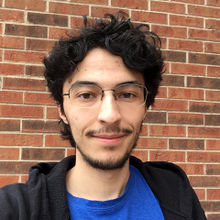
Northwestern University
Bio: I'm a rising senior mathematics major at Northwestern interested in applications of math to problems in complexity science.
SFI Mentor: Cris Moore
Talk Title: A Summer of Manifolds
Abstract: Smooth manifold theory is a foundational theory for many branches of mathematics
including differential geometry, mathematical physics, and differential topology.
This summer I explored some fundamental notions of this theory, including smooth atlases, maps, tangent spaces,
immersions, submersions, submanifolds, vector fields and flows, and Lie groups.
Jaeweon Shin

Rice University
Mentors: David Wolpert
ASPIRATIONAL ABSTRACT:
Provisional Title: Evidence for two stages in historical development
In 2017, a group of researchers (Turchin et al 2017) published a large database of historical records called Seshat. Using this dataset, the same researchers concluded that there is a major axis of social complexity, which represents how complex a society is at a given time period. By expanding on this analysis, we show that there are, in fact, two clusters within the major axis that displays different characteristics. Furthermore, we show that these two clusters could imply that all societies could be classified into largely two stages based on the relative complexities of their societies.
Sahana Subramanyam
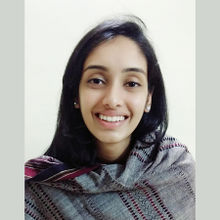
Azim Premji University
Bio: Sahana is majoring in Economics at Azim Premji University, India. She is currently researching how regressive social structures like caste emerge from certain micro-behaviours. Apart from her research, she enjoys illustrating.
SFI MENTOR: Mike Price (primary) and Paul Hooper (secondary)
ASPIRATIONAL ABSTRACT:
Provisional Title: An inquiry into the rural-urban migration of agents in a multi-layer social and economic network
The model proposed consists of three network layers: the geographic, economic and social. The geographic layer consists of rural and urban clusters with edges representing inhabitation in these areas. In the economic layer, class relations are represented as nodes (the bourgeoisie and the proletariat) linked to each other through employment. The final layer is that of a social network. The project aims to understand rural-urban migration patterns of agents motivated by economic compulsions (modeled as wage differentials) and constrained by information of wages received through their social network. A potential emergent phenomenon that could be observed is that of ghettoization in terms of class or endogenous social group signals.
Keming Zhang
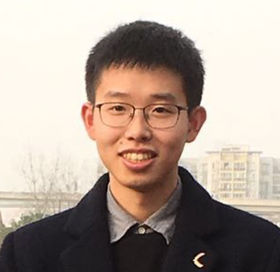
St. John's College
Bio: I am a junior at St. John’s College and study in the Great Books Program. I am interested in the application of mathematical and physical methods to social sciences. I am also quite interested in education and enjoy volunteering as a tutor.
REU Alumni Fellows
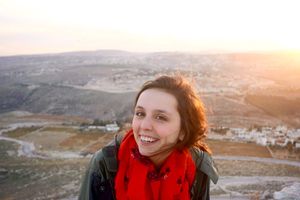
Cate Heine - Centre College to MIT
Bio: My name is Cate and I'm finishing up as a math major at Centre College in Danville, Kentucky. I like apples, mountains, crossword puzzles, and hanging out with my dog. I'm excited to begin pursuing a PhD at MIT in the fall in Social & Engineering Systems, using quantitative methods to analyze social systems. I'm especially fascinated by cities--the way that they change, grow, and affect peoples' lives.
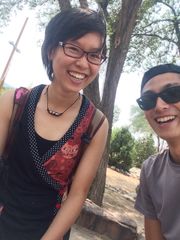
Xiaofan Liang (left in photo) - Minerva Schools at KGI
Bio: I am a junior at Minerva Schools at KGI with a background in both Computer Science and Sociology. I am passionate about computational social science and the social impacts of technologies on minorities. I work on the topic of Institutional Complexity and Efficiency - How Universities Scale with Chris and Marion as my mentors and Ryan as my project partner for almost a year now, starting from my REU experience last summer. Despite the love and hate, sweat and tears that involved, I find researching analogous patterns across social, biological and physical system fascinating and my next target are to model immigration flow patterns and see how its dynamics is different from data or other types of agents. Besides academics, I love playing basketball and currently work on a coding education software for a Hong Kong NGO serving migrant youth, and design unplug card games to teach people basic coding concepts.
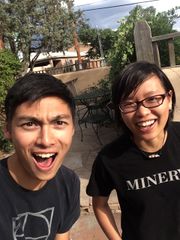
Ryan Taylor (left in photo) - Arizona State University
Bio: My name is Ryan Taylor. I entered the sustainability major at Arizona State University to study important global problems, which led me to complexity science and its overlapping set of universal ones. I sense that complex systems approaches will make much-needed theoretical contributions to politics and economics, not just in academia but in practice. Populism here and abroad makes me believe that big changes are possible by 2025, let alone 2050. So while all this is happening, I'm trying to ask helpful questions and avoid taking myself too seriously. I'm going into my senior year. I was an REU last summer! They're letting me come back to work with Xiaofan Liang and our awesome team of mentors on a project about university scaling. I grew up in New Mexico and love it here. Looking forward to meeting everybody.
